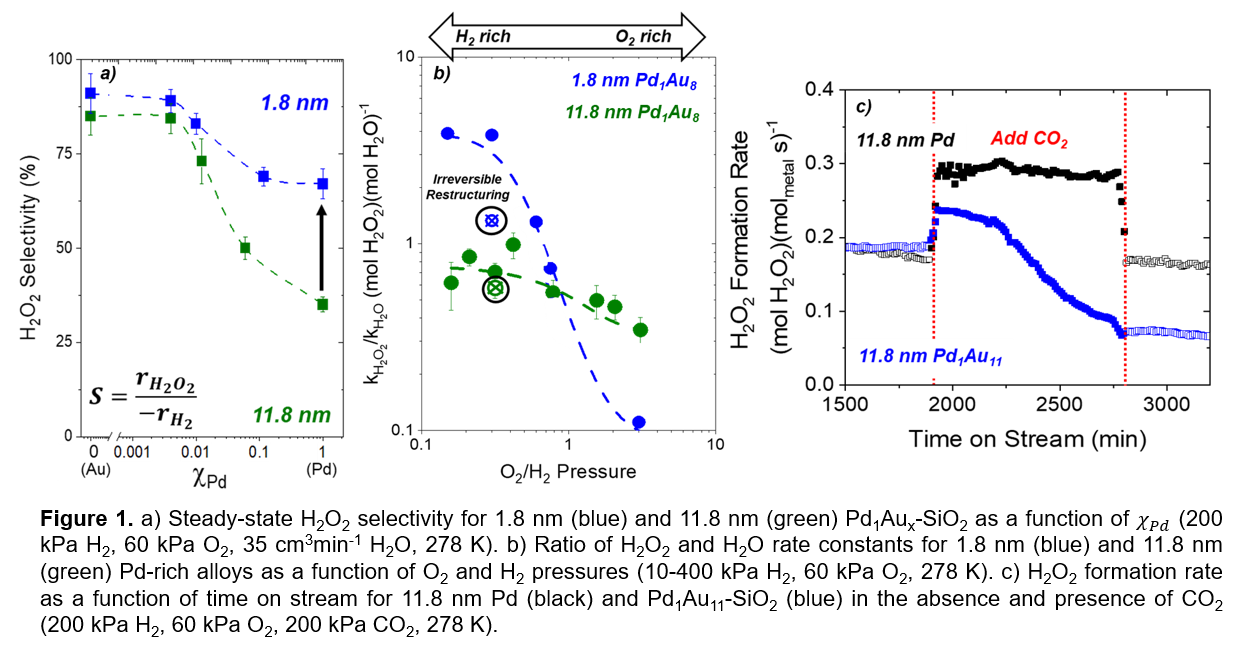Decreasing the size of bimetallic catalysts increases the fraction of atoms at surfaces, reduces site coordination, and may improve performance for catalytic reactions. Yet, the impact of size on the location of elements within bimetallic nanoparticles and the corresponding effects on kinetics remain poorly understood. Here, we examine how kinetics for the reduction of O
2 with H
2 over Pd
1Au
x nanoparticles respond to differences in nanoparticle size and Pd mole fraction (χ
Pd; 0 ≤ χ
Pd ≤ 1). Additionally, we probe the structural evolution of Pd
1Au
x on contact with relevant adsorbates (H*, O*, CO*), promoters (CO
2*), and during reactions using kinetics,
in situ and
operando spectroscopy, and DFT parameterized Monte Carlo predictions of 201 atom models.
Kinetic measurements reveal 1.8 nm Pd1Aux give greater H2O2 selectivities and formation rates across all χPd compared to 11.8 nm Pd1Aux (Figure 1a). Infrared spectra of adsorbed CO and mixed 12CO-13CO adlayers confirm greater Pd isolation with decreasing size and χPd, which agrees with the interpretation of measured kinetics and computational predictions. The smallest Pd1Aux nanoparticles (1.8 nm) restructure irreversibly during reactions, and CO confers the greatest extent of restructuring. H2O2 selectivities differ across combinations of H2 and O2 pressures in response to the accompanying changes in Pd-Pd coordination numbers (Figure 1b). Notably, the addition of CO2 increases H2O2 formation rates and selectivities on 11.8 nm Pd nanoparticles due to a change in reaction mechanism and new low barrier pathways for proton-electron transfer. In contrast, the addition of CO2 reduces rates and selectivities upon Pd1Aux nanoparticles of comparable size as a consequence of Pd ensemble formation (Figure 1c). This work expands the understanding of how nanoparticle sizes influence the structural evolution of PdAu nanoparticles and the corresponding impact on surface reactions.


